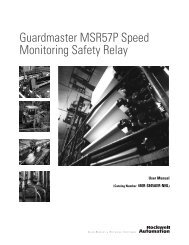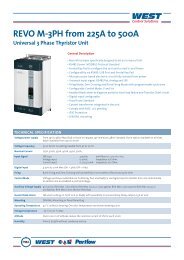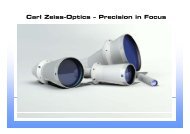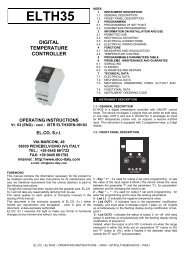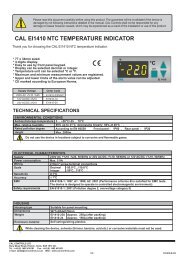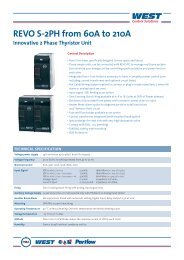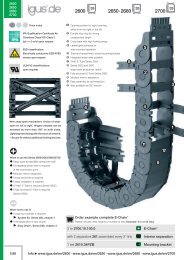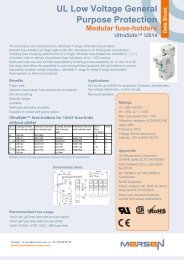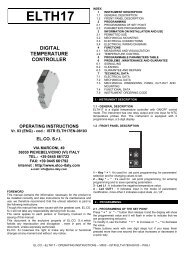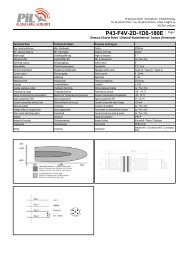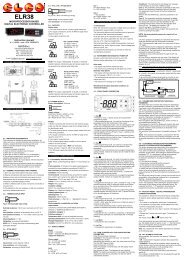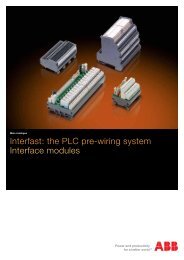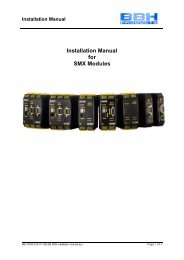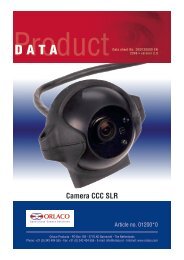Next Generation: GSR Guardmaster Safety Relays - OEM Automatic ...
Next Generation: GSR Guardmaster Safety Relays - OEM Automatic ...
Next Generation: GSR Guardmaster Safety Relays - OEM Automatic ...
Create successful ePaper yourself
Turn your PDF publications into a flip-book with our unique Google optimized e-Paper software.
M<br />
Safeguarding Applications and Wiring Diagrams<br />
Lifeline<br />
Lifeline, 800F, DI, 100S<br />
+24V DC<br />
Start<br />
800FM-<br />
F3MX10<br />
K1<br />
K2<br />
43<br />
31<br />
21<br />
11<br />
LifeLine<br />
440E-L13042<br />
(M20)<br />
Cable<br />
LifeLine<br />
440E-L13043<br />
(1/2in NPT)<br />
11 21<br />
31<br />
43<br />
S11 S21 S12 S22 A1<br />
Stop<br />
800FM-<br />
E4MX01<br />
13<br />
23<br />
S34<br />
K1<br />
L1L2 L3<br />
44<br />
32<br />
22<br />
12<br />
12 22<br />
32<br />
44<br />
DI<br />
440R-D22R2<br />
LOGIC<br />
8<br />
7<br />
6<br />
0 1<br />
2<br />
3<br />
4<br />
5<br />
K2<br />
S32 S42 L11 L12 A2 14 24 Y32<br />
440A-A17173<br />
800E-N157R<br />
855D-T10SC20B24Y4<br />
K1<br />
K2<br />
Aux Signal<br />
To PLC<br />
100S-C43DJ22BC<br />
24V DC Com<br />
Circuit Status<br />
Both Lifeline cable pull switches are taut and reset; their contacts are closed. The DI Logic setting is 6: [(IN1 AND IN2) OR L12] with<br />
automatic reset. The DI safety relay is energized, as its inputs and monitoring circuits are satisfied. The motor is off and ready to<br />
run.<br />
Operating Principle<br />
Two cable pull switches are used to protect an area from 10m to 70m in length. Auxiliary lights provide indication as to which<br />
switch has been actuated to stop the motor. The difference between the two switches is the conduit thread and shown for<br />
examples purposes.<br />
STARTING: Press the Start button to energize contactors K1 and K2. The motor starts and the two normally open contacts of K1<br />
and K2 close to hold the circuit energized across the Start button.<br />
STOPPING: Pull the Lifeline cable or press the e-stop button on the Lifeline switch to de-energize the outputs of the DI and turn off<br />
the motor. To restart the motor, make sure the area is clear of hazards, pull out the e-stop button (if pressed) and rotate the reset<br />
knob to the Run position. Then press the Start button to start the motor. As an alternative, the motor can be stopped by pressing<br />
the Stop pushbutton. It can then be restarted by pressing the Start pushbutton.<br />
Fault Detection<br />
Upon successful completion of internal checks on power up, the DI checks its input curcuits. With both Lifeline switches reset, the<br />
DI checks the output contactors through the K1/K2/S34 circuit. If the contactors are off, the DI energizes its outputs and turns on<br />
the contactors which turn on the motor. A short or open circuit fault in the Lifeline cable pull switches will be detected by the DI.<br />
If either the K1 or K2 faults in the energized state, the motor will be stopped by the other contactor and the fault will be detected<br />
by the DI on the next attempt to restart. An internal fault in the DI will be detected by itself. Depending on the type of fault, the<br />
result wil be de-energization of the K1 and K2 contactors or prevention of re-start.<br />
Ratings<br />
The safety function initiated by the Lifeline cable pull switches meets the safety performance requirements of SIL CL3 per IEC<br />
62061:2005 and has Category 4 structure that can be used in systems requiring Performance Levels up to PLe per ISO 13849-1:<br />
2008. The circuit executes a Category 0 stop.<br />
- 8-<br />
R



